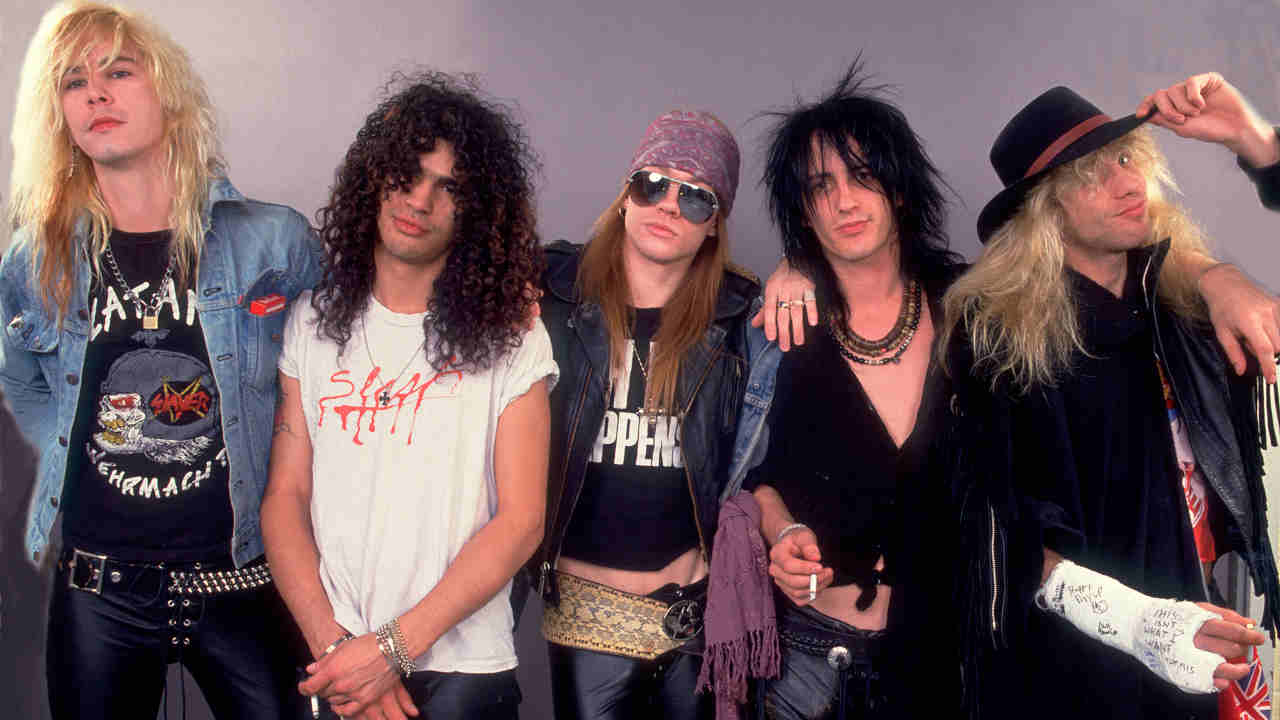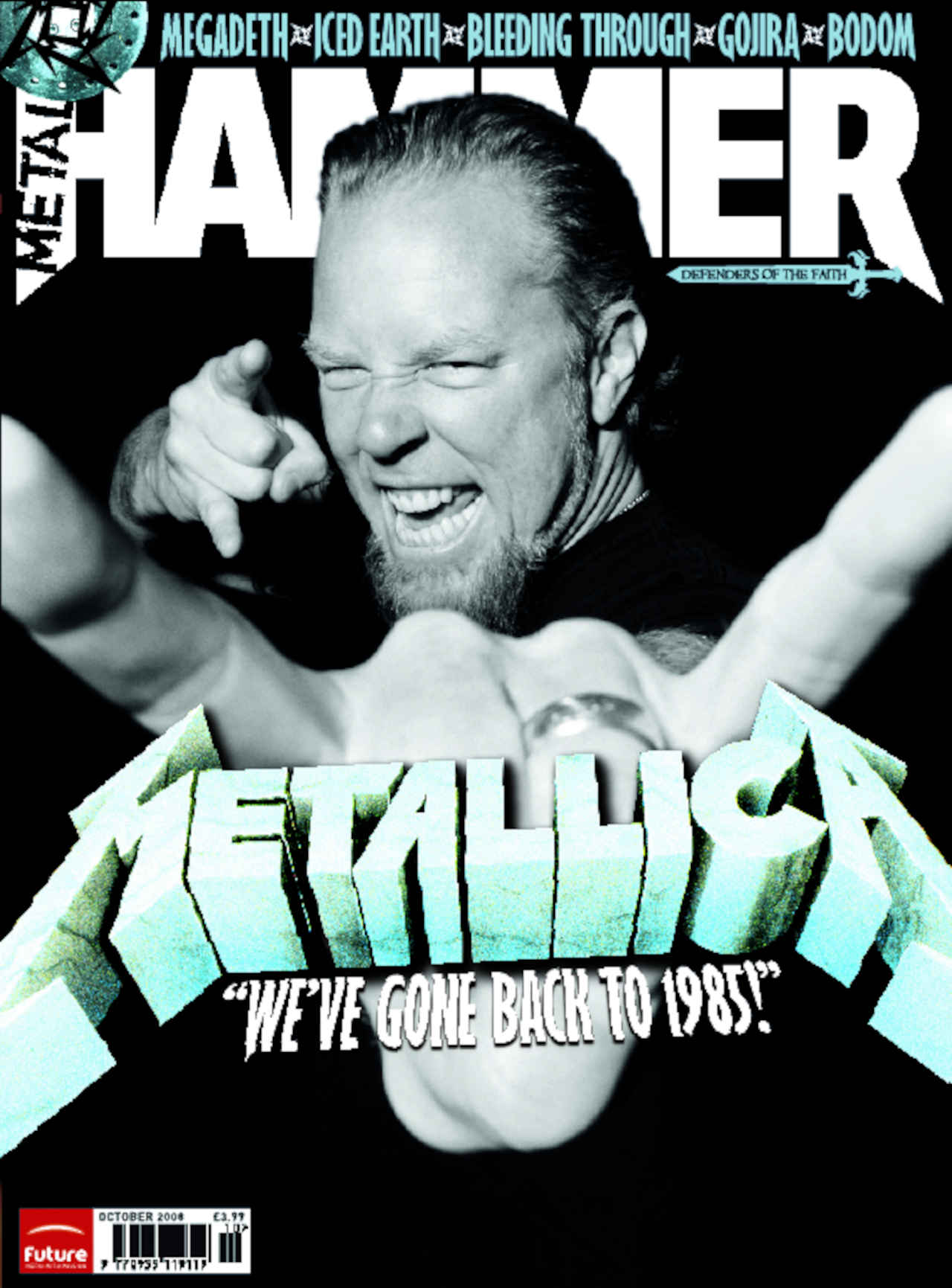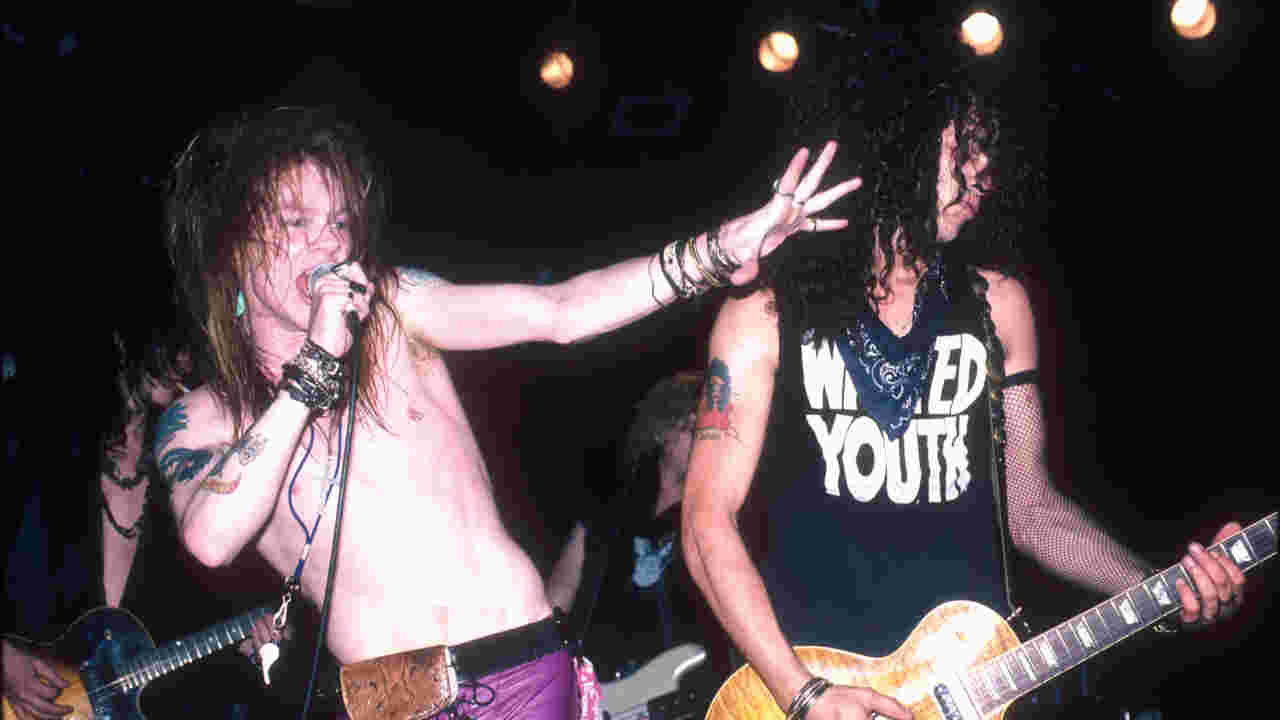Weapons N’ Roses 1987 debut album Urge for food For Destruction is among the biggest rock albums ever made – and, with 30 million gross sales to its identify, one of the vital profitable. In 2008, GN’R bassist Duff McKagan appeared again on the debauchery, madness and dwell intercourse classes that helped flip the band into megastars.
It could appear unusual now, however the arrival of Weapons N’ Roses’ debut didn’t precisely ship tornados of anticipation throughout the globe.
The band had began in LA throughout 1985, a mixture of members from Hollywood Rose (vocalist Axl Rose and rhythm guitarist Izzy Stradlin) and LA Weapons (lead guitarist Tracii Weapons, bassist Ole Beich and drummer Rob Gardner). Ole was rapidly changed by Seattle native Duff McKagan, and there have been to be two extra modifications in June 1985 earlier than GN’R stabilised.
“We booked a punk rock-style ‘Hell’ tour from LA to Seattle,” recollects Duff. “It was actually gonna be a case of sleeping on folks’s flooring and driving round in a small van. This was partly a bonding train for the 5 of us. However Rob and Tracii obtained fearful of leaving their consolation zone, and give up simply earlier than the primary present.”
Losing little time, the band introduced in guitarist Slash and drummer Steven Adler, and by August 1986, the most well liked band in Los Angeles had signed to Geffen.
“We had a number of labels chasing us,” recollects Duff. “We selected Geffen, as a result of we felt they’d give us whole creative management.”
Releasing the Stay ?!*@ Like A Suicide EP (on their very own Uzi Suicide imprint, regardless that it was truly owned by Geffen) simply to introduce their angle and sound to a wider viewers, the band then confronted the daunting activity of discovering a producer.

“Our first alternative was Mutt Lange (AC/DC, Def Leppard),” admits Duff. “However he was too costly. Apart from, we wished a dwell sound. We didn’t need a great deal of studio trickery. That’s why we rejected a number of massive names – these guys weren’t proper for us.”
So, out went the likes of Intercourse Pistols collaborator Invoice Value and W.A.S.P. producer Spencer Proffer. Additionally spurned was Kiss’s Paul Stanley.

“We knew he wasn’t the fitting man for us when he wished so as to add an increasing number of to Steven’s drumkit. We’d simply spent ages persuading Steven to chop again, now right here was Paul Stanley doing the other!”
In the long run, the selection was digital unknown Mike Clink, who appealed due to his simplistic strategy.
“He obtained us immediately. Mike got here right down to our rehearsal studio, recorded what we did on an previous eight-track reel-to-reel machine, performed it again and stated, ‘That’s what you need to sound like’ which was precisely what we wished.”
y the beginning of 1987, the band and Mike had been in pre-production for the album, earlier than going into the studio the next month. They labored rapidly, spending simply two weeks on the essential tracks at Rumbo Studios in LA, then slipping in an additional 10 days’ additional work at One On One Studios, once more in LA. All informed, the report took just below a month to report, costing lower than $200,000. After all, this was GN’R, so…
“Not all of that price range was used for the recording of the album,” laughs Duff. “And we did have enjoyable alongside the best way.”
Just a few months earlier, the band’s then supervisor, Arnold Stiefel, who additionally sorted Rod Stewart, had resigned after discovering that his younger costs had achieved hundreds of {dollars}’ price of harm to a rented home, leaving their label in shock. They already had a status for debauchery and outrage, and this wasn’t to be left on the studio doorways.
“After we had been doing the essential recordings, not all of us had been wanted on the similar time. So, Steven and I’d be working, and Slash would get so hammered that he’d are available in to jam together with us, and he was so out of tune that we’d have to chop him out of our headphones. However he’d be completely sober for his components, after which I’d get completely drunk.”

All of this was to pale into the mists of playful behaviour when put up in opposition to what occurred in the course of the recording of the album’s eventual closing tune Rocket Queen. Axl, deciding to boost the tune, felt that what was wanted was an orgasm or three within the studio. Consequently, he invited Adriana Smith, Steven’s someday girlfriend, to One On One Studios – and proceeded to bask in somewhat little bit of one-on-one! Adriana was offended with Steven for allegedly dishonest on her, so noticed it as an opportunity for revenge.
“Sure, that’s all true,” reveals Duff. “The intercourse session did occur, and the complete tapes are someplace. So, what you hear on the tune is actual porn motion. We recorded a load of different stuff as effectively, like conversations; I’ve no clue the place these all ended up.”
Just a few of the songs on the report had been truly about ladies with whom GN’R had been acquainted. Rocket Queen is definitely about Barbie Von Grief, an actual underground scene queen. My Michelle was written about Michelle Younger (whose father actually was a porn distributor, whereas her mom had died from a heroin overdose). After which there’s Candy Youngster O’Mine, which is about Axl’s future spouse Erin Everly, as is Assume About You.
“This was the final tune written for the album,” says Duff of the previous. “Neither Slash nor I wished it on the report. It was a ballad, and we wished to rock out. We felt it must be saved for the subsequent album. However as soon as we’d recorded it, the tune fitted in with the entire Urge for food… groove.”
All 5 members of the band had been happy with what they’d recorded, however none believed it could get even near reaching something commercially.
“We obtained out of the recording classes what we wished. We had been all on the identical wavelength and believed that this album represented us in the absolute best manner. However did we expect it may promote? No. For me, the intention was to match what the Circle Jerks may do at their peak, particularly promote about 40,000 copies. The thought of that many individuals proudly owning this was thrilling sufficient.”

The report was launched on the finish of July 1987. By September of that yr, it was promoting effectively sufficient to interrupt into the High 100 within the US, because the band toured over there supporting The Cult. By Christmas with gross sales of 200,000 in America, the final feeling was that the album had run its course.
“We had been delighted with that determine. Within the US we hadn’t achieved amazingly, however Britain appeared to essentially like us [the record got to number five], and so did Japan.”
Given the underground ethic of the band and album – with songs about sleaze, depravity, drunkenness (Nightrain was an ode to a very low cost but potent eponymous wine) and laborious medication (Mr Brownstone was Slash and Izzy’s ‘dialogue’ about heroin) – absolutely no person may have anticipated such a controversial band to promote any extra copies? This perception was underlined by issues with the unique album sleeve, a portray referred to as ‘Urge for food For Destruction’ from cult artist Robert Williams, found by Axl, which depicted a robotic raping a girl
“We needed to change the sleeve for some massive purchasing chains, and puzzled whether or not that may confuse folks and have an effect on report gross sales,” says Duff.
So, what was the turning level within the US, the one which hurtled Urge for food For Destruction up in the direction of 20million gross sales? There have been two. Firstly, simply earlier than Christmas 1987, an edited model of the video for Welcome To The Jungle (with a scene with Steven licking a lady’s shoulder needed to be reduce out) was proven by MTV within the early hours of the morning. Regardless of solely being grudgingly screened on the graveyard shift as a favour to Geffen, the clip all of a sudden acquired a surge of help. The TV station’s switchboard was jammed with requests for a repeat exhibiting.

If this gave Urge for food For Destruction a well timed enhance, the discharge of Candy Youngster O’Mine as a single despatched gross sales roaring.
“We had been on tour supporting Aerosmith in America in the course of the summer season of 1988 when Candy Youngster O’Mine took off,” recollects Duff, nonetheless barely dazed by the best way his life was all of a sudden flipped like a card in a hurricane. “It went to primary in America after which, nearly a yr to the day after its launch [specifically, August 6], Urge for food For Destruction was high of the US charts. The entire thing was loopy. We would have been opening for Aerosmith, however we’d have 17,000 followers each evening turning up early to see us and going loopy. We’d by no means heard something prefer it.”
However whereas the world appeared to be revolving across the GN’R axis, the 5 guys themselves had been comparatively unscathed and unchanged on the time.
“You must perceive, we had been nonetheless incomes $125 every week and residing in the identical squalor. We couldn’t grasp the truth that this report was promoting thousands and thousands. I recall getting my first royalty cheque for $80,000 and having no concept what to do with a lot cash!”
The album would go on to grow to be one of many greatest promoting albums of all time. It could have been made within the Eighties, however neither its gutter-level material nor the uncooked however timeless manufacturing have aged.
“For me, 1987 was about U2’s The Joshua Tree album, which was wonderful. So, I can perceive how any report, even ours, can have such a huge effect on somebody’s life,” concludes Duff. “Being a part of this phenomenon makes me really feel extremely proud. I by no means take as a right what Urge for food… did for therefore many individuals – particularly us.”
Initially revealed in Steel Hammer concern 184, September 2008

